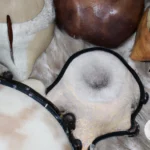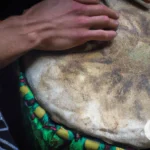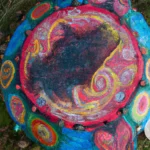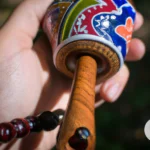The Power of Sound in Shamanism
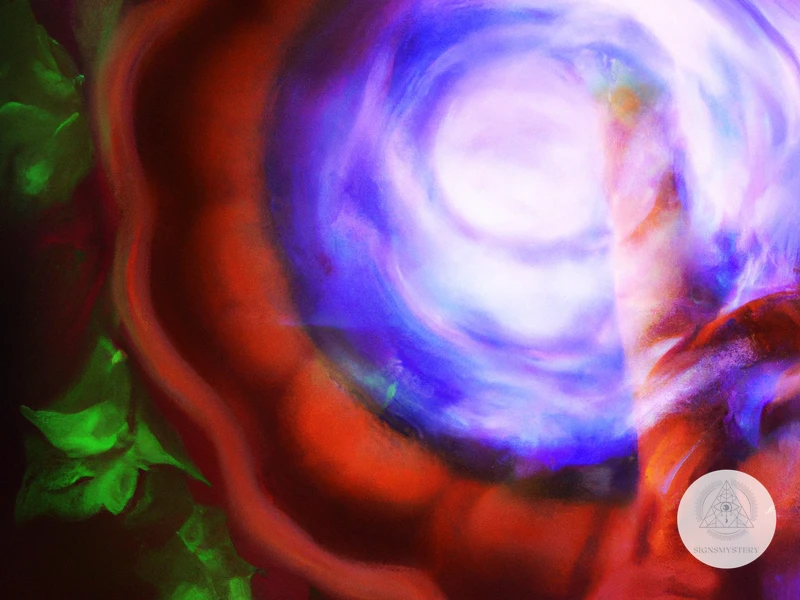
Sound has always played a significant role in shamanism, as it is believed to have the power to connect the individual with the spirit world. The shaman uses various tools to create sound during their ceremonies and healing rituals, such as drums, rattles, chimes, and even gongs.
Sound is believed to be a powerful tool for altering consciousness, inducing trance states, and shifting energy within the body. The rhythmic beats of a drum or the melodic tones of a flute can help to quiet the mind and allow the individual to connect with their innermost self and the spiritual realm.
In shamanism, sound is used for a variety of purposes, such as calling forth spirits, communicating with ancestors, and facilitating healing. The shaman may use sound to enter altered states of consciousness, receive guidance and wisdom, and even help to remove negative energy or blockages from their clients.
Additionally, sound is believed to have a transformative effect on the body and mind, with healing qualities that can help to alleviate physical, emotional, and spiritual discomfort. It is thought to help balance energy centers in the body, release emotional tension, and enhance overall well-being.
The power of sound in shamanism is also linked to the idea that everything in the universe is composed of vibration. The sound produces vibrations, which can impact those around it, including the physical, emotional, and spiritual body. Sound is considered a powerful catalyst for change and transformation, helping individuals to achieve greater states of harmony and wholeness.
The Role of Flutes in Shamanic Journeying
The flute has been used in shamanic journeying for centuries as a tool for accessing spiritual states of consciousness. The sound of the flute is believed to have the power to transport the listener to a different realm, allowing them to connect with spirit guides and receive guidance and healing.
History of Flutes in Shamanism
The use of flutes in shamanic practices dates back to the earliest known civilizations. Many ancient cultures believed in the power of music and used flutes and other instruments in their spiritual ceremonies. In shamanic cultures, the flute is often associated with the wind, which is believed to be a symbol of the spirit world.
The Sound of the Flute
The sound of the flute is an essential part of shamanic journeying. The sound is believed to have a unique vibration that can transport the listener to a different state of consciousness. The sound of the flute creates a harmonic resonance that can activate the body’s natural healing processes.
The Flute as a Sacred Tool
In shamanic cultures, the flute is viewed as a sacred tool that is used for accessing spiritual realms. The flute is often played during shamanic ceremonies to help participants connect with the spirit world. The flute is believed to have the power to open up channels of communication between humans and spiritual entities.
The Intention Behind Flute Playing
The intention behind flute playing is essential in shamanic journeying. The player must have a clear intention in mind before they begin playing. The intention can be as simple as asking for guidance or healing or as specific as requesting to meet a particular spirit guide. The intention creates a pathway for the listener to follow and helps them to focus their energy on their desired outcome.
How Flutes Assist in Journeying
The sound of the flute can help the listener to enter into a state of trance. The repetitive sound of the flute is believed to mimic the rhythms of the natural world, such as the beating of the heart or the sound of the wind through the trees. This repetitive sound can help the listener to enter a state of deep relaxation, allowing them to connect with their innermost selves.
Summary Table
| Key Points | Details |
|---|---|
| History of Flutes in Shamanism | Flutes have been used in shamanic practices for centuries. Many ancient cultures believed in the power of music and used flutes and other instruments in their spiritual ceremonies. |
| The Sound of the Flute | The sound of the flute creates a harmonic resonance that can activate the body’s natural healing processes and is believed to transport the listener to a different state of consciousness. |
| The Flute as a Sacred Tool | The flute is viewed as a sacred tool that is used for accessing spiritual realms in shamanic cultures. |
| The Intention Behind Flute Playing | The intention behind playing the flute is important and creates a pathway for the listener to follow and helps them to focus their energy on their desired outcome. |
| How Flutes Assist in Journeying | The sound of the flute can help the listener to enter into a state of trance and deep relaxation, allowing them to connect with their innermost selves and access the spirit world. |
Choosing the Right Flute for Your Journey
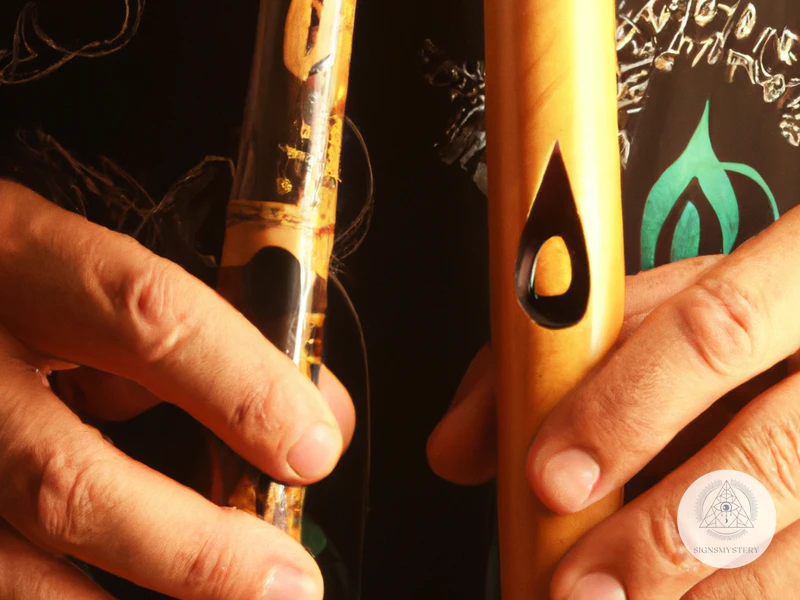
Choosing the perfect flute for your shamanic journey can make all the difference in the world. There are several factors to consider when making this choice. First, you must decide on which type of flute fits your needs. There are various types of flutes, including the Native American flute, the Bansuri flute, and the Shakuhachi flute. Each type has a different sound and may be better suited for specific purposes. Additionally, you must consider the size and key of the flute, as this will affect the range of sounds it produces. Making the right choice of flute will help you achieve a state of trance during your journey, connecting with your inner self and the spiritual world.
The Different Types of Flutes
When it comes to choosing the right flute for your shamanic journey, it’s important to understand the different types of flutes available. Each type of flute has its unique characteristics that affect the sound it produces and the experience it creates. Here are some of the most common types of flutes used for shamanic journeying:
| Flute Type | Description |
|---|---|
| Bansuri Flute | Made from bamboo, this Indian flute produces a smooth, mellow sound that can evoke deep emotions and relaxation. |
| Native American Flute | Made from wood, this flute produces a rich, earthy sound that is perfect for shamanic journeying and connecting with nature. |
| Japanese Shakuhachi Flute | Made from bamboo, this flute produces a haunting, meditative sound that can induce a trance-like state. |
| Dizi Flute | Made from bamboo, this Chinese flute produces a bright, clear sound that can symbolize joy and happiness. |
| Pan Flute | Made from bamboo or other materials, this flute produces a soothing, ethereal sound that can connect you to the spiritual world. |
| Ocarina | Made from clay or ceramic, this flute produces a high-pitched, sweet sound that can evoke feelings of innocence and playfulness. |
Note: These are just a few examples of the various types of flutes available for shamanic journeying. It’s important to choose a flute that resonates with you, both in terms of its sound and its appearance. Some people prefer to have their flutes custom-made or to decorate them with personal symbols and imagery. Whatever type of flute you choose, make sure it feels like a sacred and meaningful object that will help guide you on your journey.
Factors to Consider When Choosing a Flute
When selecting a flute for shamanic journeying, there are a variety of factors to consider. Firstly, it’s important to choose a flute that resonates with you personally. The sound and feel of the flute should be appealing to you since you’ll be using it for deep meditation and healing purposes.
Secondly, consider the type of wood the flute is made of. Different woods have different energies that can impact the sound of the flute. For example, cedar and redwood flutes can have a brighter tone, while ebony and walnut flutes can have a deeper, more mellow tone. It’s important to do your research and find a wood that aligns with your intentions for the flute, as well as with your own personal energy.
Additionally, consider the length and diameter of the flute. Longer flutes generally have deeper tones, while shorter flutes have a higher pitch. The diameter of the flute affects the breath required to play it and can impact your ability to create the desired sound. It’s important to experiment with different lengths and diameters to find the size that works best for you and your intentions.
Finally, consider the quality of the flute. A poorly made flute can have a negative impact on your journey experience, while a well-crafted flute can enhance it. Look for flutes that are crafted by experienced artisans using quality materials. It may be worth investing in a higher quality flute to ensure the best possible journey experience.
Preparing for Your Flute Journey
Preparing for a flute journey requires intentional and deliberate steps to ensure a successful experience. Begin by setting your intention for the journey, whether it be for healing, guidance or simply exploration. Next, create a sacred space free from distractions and noise, where you can comfortably sit or lie down. Before starting the journey, it’s important to clear your energy and release any negative emotions or thoughts that may hinder your experience. This can be done through breath work, meditation, or visualization. Additionally, opening your chakras can help to balance your energy centers and increase your receptivity to the healing power of the flute. By taking these steps in preparation for your flute journey, you are setting yourself up for a transformative and deeply healing experience.
Setting Your Intention
One of the most important steps in preparing for a shamanic journey with flutes is setting your intention. This is the foundation of the entire experience and can greatly impact the outcome of your journey. To set your intention, follow these steps:
- Get Clear on Your Intention: Take some time to ponder what it is you want to achieve or receive during your journey. It can be helpful to write it down in a journal. Examples of intentions include healing a specific ailment, receiving guidance on a life decision, or connecting with a loved one who has passed away.
- Use Positive Language: Phrase your intention in positive terms, instead of negative. For example, instead of saying “I don’t want to be anxious anymore,” say “I want to feel calm and at peace.”
- Make it Specific: It’s important to be specific about what you want to achieve. Instead of a broad intention like “I want to be happy,” focus on a specific aspect of happiness that you want to work on.
- Visualize: Envision yourself achieving your intention and tap into the emotions that come with it. For example, if your intention is to feel more confident, imagine yourself standing tall and proud, with a sense of self-assurance.
- Repeat Your Intention: Repeat your intention to yourself or out loud several times before beginning your journey, to firmly plant it in your subconscious mind.
Remember that setting your intention is a powerful tool for manifesting your desires and allowing for a more fulfilling shamanic journey with flutes. Take the time to set a clear and specific intention, using positive language and visualization to align your subconscious with your desired outcome.
Creating a Sacred Space
Creating a sacred space is an essential step in preparing for a shamanic journey with flutes. This space should be a reflection of your intention and should be free from any distracting or negative energies.
You can start by choosing a quiet and comfortable place where you will not be disturbed. You could use your living room, bedroom, or any other place that you find suitable.
Next, cleanse the space with smoke from sage or other cleansing herbs such as cedar or palo santo.
Then, add items that are meaningful to you, such as crystals, candles, or spiritual statues. Consider including symbols that represent your intention for the journey.
It’s also helpful to create a dedicated space for your flute or other musical instruments that you will be using. This helps to set the tone for the experience and makes it easier to enter into a meditative state.
Finally, ensure that you are comfortable and that the space is conducive to your well-being. Dim the lights, and add anything else that makes you feel relaxed and at peace. The goal is to create an environment that supports your journey and allows you to focus on your intentions.
Creating a sacred space is a key step in preparing for your shamanic journey with flutes. It helps to set the tone for the experience and allows you to be fully present in the moment. By taking the time to create a space that reflects your intention, you can optimize your chances of having a meaningful and transformative experience.
Clearing Your Energy
Clearing your energy is a key component in preparing for a shamanic journey with flutes. The process involves releasing any negative emotions, thoughts or physical sensations that may be blocking your energy flow. These blocks can prevent you from fully experiencing the healing power of the sound of the flutes.
One effective way to clear your energy is through breathwork. Take deep, intentional breaths to release any tension in your body. As you exhale, imagine any fear or negative energy leaving your body. Focus on your breath and visualize each inhale bringing in positive and healing energy.
Another way to clear your energy is through the use of crystals. Crystals such as quartz, amethyst and citrine are known to have cleansing properties. Hold a crystal in your hand and visualize your energy being purified as you meditate on the crystal’s energy.
You can also use the power of sound to clear your energy. Toning is a technique that involves humming or chanting a single note. This vibration can break up any stagnant energy in your body, allowing for a more free-flowing energy. You can also listen to music or sounds that resonate with you, that promote feelings of calmness and relaxation.
Clearing your energy before a flute journey is essential for allowing yourself to fully open up to the healing power of sound. Take the time to identify any blocks in your energy and explore the various techniques that work best for you to clear them. This will allow for a deeper, more profound experience during your journey.
Opening Your Chakras
Opening your chakras is an essential step in preparing for a shamanic flute journey. Chakras are energy centers located in different parts of the body, and when they are blocked or imbalanced, it can affect our physical, emotional and spiritual health. By opening your chakras before a flute journey, you can facilitate the flow of energy in your body, allowing for a deeper and more transformative experience.
Here are some ways to open your chakras before a shamanic flute journey:
| Chakra | Location | Ways to Open |
|---|---|---|
| Root chakra | Base of spine |
|
| Sacral chakra | Lower abdomen |
|
| Solar Plexus chakra | Upper abdomen |
|
| Heart chakra | Chest |
|
| Throat chakra | Throat |
|
| Third Eye chakra | Forehead |
|
| Crown chakra | Top of head |
|
Opening your chakras can be done through various techniques, but it’s important to find the ones that work best for you. This can greatly enhance your shamanic flute journey experience, as it allows the energy to flow freely and balance to be restored.
The Flute Journey Experience

The Flute Journey Experience is a profound and transformative practice that uses the power of sound and intention to facilitate healing and guidance. In this experience, the shaman or the journeyer uses a flute to enter a trance-like state, where they can connect with their spirit guides, receive messages, and access deep insights. It is essential to create a sacred and protected space before beginning the journey, where the journeyer can feel safe to explore the depths of their psyche. Once in a trance state, the journeyer may experience vivid images, sensations, and emotions, which can reveal hidden aspects of themselves and bring about deep healing. After the journey, the journeyer should take the time to integrate their experience through journaling, reflection, or other expressive arts. The flute journey experience offers a unique opportunity for personal transformation and spiritual growth through the healing power of sound.
Entering the State of Trance
Entering the state of trance is a crucial part of the shamanic journey with flutes. This is where the healing power of sound starts to take effect. To enter a trance state, you need to quiet your mind and focus your attention on the sound of the flute. This can be done by sitting in a quiet place, closing your eyes, and taking a few deep breaths. As you listen to the sound of the flute, let go of any thoughts and emotions that may be distracting you.
Concentration and Relaxation
As the sound of the flute continues to play, you may start to feel a sense of relaxation and concentration. This is because the sound of the flute can help to slow down your brainwave activity, allowing you to enter a state of relaxation and heightened awareness. This state of consciousness is often referred to as a trance state.
Visualization
To deepen your trance state, you can use visualization techniques. Imagine yourself in a peaceful and serene environment, such as a forest or a beach. As you listen to the sound of the flute, visualize yourself traveling deeper into this environment. You may encounter spiritual entities or guides who will help you on your journey.
Acknowledge and Release
During the trance state, you may become aware of emotions or feelings that are deep within your subconscious. It is important to acknowledge these emotions and allow yourself to feel them fully. Once you have acknowledged them, release them with each exhale, knowing that you no longer need to hold onto them.
Stay Grounded
Finally, it is important to stay grounded during the trance state. This means that you are aware of your physical body and your surroundings. As you journey with the flute, continue to feel the ground beneath you and the physical sensations in your body.
By entering a state of trance with the flute, you allow the healing power of sound to work its magic. This is where you can connect with your spiritual self and receive guidance and healing from higher powers. Remember to stay focused on the sound of the flute, while allowing yourself to fully experience this trance state.
Meeting Your Spirit Guides
In the shamanic journey with flutes, meeting your spirit guides is a crucial part of the experience. These guides may appear in various forms such as animals, humans, or mythical beings. Here are some things to keep in mind when meeting your spirit guides:
| Tip | Description |
|---|---|
| Set an intention | Before starting your journey, set an intention to meet your spirit guide and receive their guidance. |
| Be open-minded | Avoid having any preconceived notions of what your spirit guide may look like or how they may act. Be open to receiving their message in any form. |
| Establish connection | When you encounter your spirit guide, take some time to establish a connection. Trust your intuition and communicate with them through thoughts, feelings or words. |
| Ask questions | Ask your spirit guide any questions you may have. Listen carefully to their responses and trust the guidance you receive. |
| Express gratitude | When your interaction with your spirit guide comes to an end, express your gratitude for their presence and guidance. |
Remember that meeting your spirit guides in the shamanic journey with flutes is a unique and personal experience. Trust your intuition and allow yourself to surrender to the process. The guidance and wisdom you receive from your spirit guides can have a profound impact on your spiritual and personal growth.
Receiving Healing and Guidance
Receiving healing and guidance during a shamanic flute journey can be a powerful and transformative experience. As you enter into a state of trance, the music of the flute can help to access your subconscious mind and connect you with your spirit guides, allowing you to receive the healing and guidance that you need.
One of the most common ways of receiving healing and guidance during a shamanic flute journey is through visualization. This involves creating a mental image of what you wish to manifest or heal, and allowing the music of the flute to guide you towards that vision.
If you’re struggling with a physical ailment, you might visualize the affected area of your body as being surrounded by a warm, healing light. Allow that light to penetrate the affected area, cleansing and healing it. Alternatively, you might imagine yourself in a beautiful natural setting, and allow yourself to soak up the healing energy of your surroundings.
During your journey, you may also encounter your spirit guides, who can help you to gain a deeper understanding of yourself and the challenges you’re facing. These guides can take on the form of animals, ancestors, or other symbols that hold significance for you.
To receive guidance from your spirit guides, try asking a specific question or expressing a particular concern before beginning your journey. As you listen to the music, pay attention to any images, sensations, or insights that come to you. These can provide valuable clues about the steps you need to take to move forward in your journey.
Ultimately, the process of receiving healing and guidance during a shamanic flute journey is a deeply personal one. What one person experiences during their journey may differ from another’s experience. However, by remaining open to the possibilities and allowing the music of the flute to guide you, you can access powerful insights and healing that can help you to move forward in your life with greater clarity and purpose.
Coming Back to Consciousness
After journeying with the flute, it can be difficult to return to normal consciousness. Your mind and body will be in a deeply relaxed state, and it may take some time to fully come back to yourself. It is important to take the transition time back into the physical world slowly and with intention.
Start by taking deep breaths and gradually opening your eyes. Take a few moments to stretch your body and become aware of your surroundings. Remember that you are still connected to the spirit world, so take a few moments to honor and thank your spirit guides for their guidance and support.
You may want to do some grounding exercises to help bring your energy back down to earth. This can include physical activities, such as walking outside or doing yoga, or simply sitting and focusing on your breath.
It is also important to process your journey experience and integrate it into your daily life. Take time for introspection and journaling, and consider discussing your experience with a therapist or trusted friend. Reflect on any insights or guidance you received during the journey and how you can apply it to your life moving forward.
Remember that the shamanic journey with flutes is a powerful tool for self-discovery and healing, and it is important to honor and respect the process of coming back to consciousness.
Integrating Your Experience
After completing a shamanic flute journey, it’s important to integrate your experience in a way that can benefit your everyday life. One way to do this is through journaling and reflection. Take some time to write down any insights, messages, or feelings that came up during your journey. You can also use expressive arts and movement as a tool for integration. Try painting, dancing, or singing to express any emotions that may have surfaced. Another effective way to integrate your experience is by sharing it with a therapist or community, which can provide support and guidance. Remember to honor the process, and allow yourself time and space to fully integrate the healing and guidance received from the shamanic flute journey.
| Methods for Integrating Your Experience | Description |
|---|---|
| Journaling and Reflection | Writing down insights, messages, and feelings from the journey |
| Expressive Arts and Movement | Using art, dance, or music to express emotions and insights |
| Sharing with a Therapist or Community | Receiving support and guidance from a therapist or sharing with a community |
Journaling and Reflection
Journaling and reflection are powerful tools to help you integrate your shamanic flute journey experience. By writing down your thoughts and emotions, you can gain a deeper understanding of yourself and your journey. Journaling allows you to record your experiences and insights, helping you to remember the details of your journey. When you journal, focus on what you felt, saw, and heard during your journey, as well as any messages you received from your spirit guides.
Reflection is another important part of the integration process. Take time to reflect on your journey and what it means for you. You can ask yourself questions such as: What did I learn from this journey? How can I apply these insights to my daily life? What changes do I want to make based on what I learned? Reflection can help you to connect the lessons from your journey to your personal growth and healing.
One way to combine journaling and reflection is to create a gratitude list. Write down everything you are thankful for and that you learned during your journey. This list will remind you of the positive experience you had, and also help you stay focused on your growth and healing.
Journaling and reflection can be done alone or with a therapist or guide. Sharing your thoughts with another person can help you gain further insights,
Subscribe to Our Newsletter
Sign up to receive the latest news and updates.
Journaling and reflection are important tools to help you process and integrate your shamanic flute journey experience. Take time to write down your thoughts, reflect on your journey, and create a gratitude list. These practices will help you to deepen your understanding of yourself, promote healing, and live a more purposeful life.
Expressive Arts and Movement
can be a powerful way to integrate and deepen your experience after a shamanic journey with flutes. By engaging in creative movement or art-making, you can further explore the messages and insights you received during your journey, as well as identify any emotions or limiting beliefs that may have surfaced.
Movement can be especially helpful in releasing any physical sensations or tension that may have arisen during the journey. There are many forms of movement that can be used, including dance, yoga, or even simply shaking or stretching. As you move your body, allow yourself to express any emotions or sensations that arise, whether it be through vocalizations, tears, or laughter.
Similarly, expressive arts such as painting, drawing, or writing can help to externalize and process any insights or emotions that may have emerged during the journey. You can use colors, shapes, and symbols to represent your journey experience, and explore any themes or meanings that may have emerged.
It’s important to approach any expressive arts or movement practices with a sense of curiosity and openness, rather than judgment or expectation. Let go of the need to create something “perfect” or “meaningful,” and instead allow yourself to explore and play.
Ultimately, the goal of incorporating expressive arts and movement into your integration process is to deepen your connection to your journey experience and integrate any insights or healing that may have occurred. By engaging in these practices, you may also discover new insights or meanings that you may have missed during the initial journey itself.
Sharing with a Therapist or Community
Sharing your flute journey experience with a therapist or community can be a powerful way to integrate the healing and guidance you received. This allows you to process the experience with others who may have had similar or related experiences.
Here are some ways you can share your flute journey experience:
| Option | Description |
|---|---|
| Individual Therapy | Working one-on-one with a therapist who is trained in shamanic practices and sound healing can help you process and integrate your experience. They can provide additional guidance and support as you navigate any challenges or unanswered questions that may have arisen during your journey. |
| Group Therapy | Joining a therapy group that focuses on shamanic practices and sound healing can create a sense of community and allow you to connect with others who are on a similar path. It provides a safe space to share your journey experience and receive feedback, support, and encouragement from others. This can also help reduce feelings of isolation and provide a sense of belonging. |
| Workshops and Retreats | Participating in workshops or retreats that focus on shamanic practices and sound healing can provide a deeper understanding of the flute journey experience. These settings offer the opportunity to share your experience with others, receive feedback, and learn from experienced facilitators. They also provide a chance to connect with like-minded individuals and build a sense of community. |
No matter which option you choose, sharing your experience with a therapist or community can be a valuable tool for integrating the healing and guidance received during your flute journey. It provides a space to process any emotions, thoughts, or questions that arise and can help you move forward with a deeper sense of clarity and purpose.
The Science of Sound Healing
Sound healing is a practice that utilizes the therapeutic properties of sound to promote physical and emotional well-being. The science behind the effectiveness of sound healing lies in the concept of entrainment. Entrainment is the phenomenon in which the powerful vibrational frequency of one object causes another object to vibrate at the same frequency, bringing it into a state of resonance. Research has shown that sound waves, when properly modulated, can promote relaxation, reduce stress and anxiety, lower blood pressure, and alleviate pain and depression. Sound healing can also stimulate the release of endorphins – the body’s natural painkillers – and enhance the production of dopamine and serotonin, which are essential neurotransmitters responsible for regulating mood and emotions. Combining sound healing with other modalities, such as meditation, visualization, and energy work, can create a powerful synergy that can promote deep healing and transformation.
How Sound Affects the Brain and Body
Sound has a profound effect on both our brain and body. When we hear sound, it first travels through the ear canal and then reaches the eardrum. The eardrum starts to vibrate, and these vibrations are then transmitted to the inner ear. In the inner ear, tiny hair cells convert these vibrations into electrical signals that are sent to the brain via the auditory nerve.
Different frequencies of sound affect the brain and body in different ways. For example, low-frequency sound waves can have a calming effect, while high-frequency sound waves can be energizing. Certain frequencies can even help to activate certain parts of the brain or promote the release of specific hormones in the body.
Studies have shown that exposure to certain types of sound, such as the sound of water or birds singing, can lower stress levels and promote relaxation. Other types of sound, such as music or drumming, can stimulate the release of dopamine in the brain, which is associated with the experience of pleasure and reward.
Sound can also affect the body at a physical level. For example, certain sound frequencies can help to reduce muscle tension and alleviate pain. This is because sound can stimulate the body’s natural relaxation response, which can reduce inflammation and promote healing.
Sound can affect our brainwaves, which are patterns of electrical activity in the brain. Different types of brainwaves are associated with different states of consciousness, such as alertness, relaxation, and deep meditation. When we listen to certain types of sound, such as binaural beats, we can entrain our brainwaves to match the frequency of the sound, which can promote a particular state of consciousness.
Sound has a powerful effect on both our brain and body. By understanding how different types of sound affect us, we can use sound as a tool to support our physical, emotional, and spiritual well-being.
The Benefits of Sound Healing
The use of sound for healing has been around for thousands of years and is still a popular practice today. There are numerous benefits to sound healing that can have a positive impact on both physical and mental well-being. Here are some of the benefits of sound healing:
| Benefit | Description |
| Reduces Stress and Anxiety | Sound healing has been found to effectively reduce stress and anxiety levels. The vibrations of the sound can help to calm the mind and promote relaxation. |
| Improves Sleep | Sound healing can improve the quality of sleep by relaxing the body and reducing stress levels. This can lead to a deeper, more restful sleep. |
| Relieves Pain and Tension | The vibrations of sound can help to release tension in the body and reduce pain. This can be particularly beneficial for conditions such as chronic pain, headaches, and muscle tension. |
| Boosts Immune System | Sound healing can boost the immune system by reducing stress levels, which can have a positive impact on overall health and well-being. |
| Enhances Mental Clarity and Focus | The calming effect of sound healing can improve mental clarity and focus. This can be beneficial for those who struggle with concentration or have a busy mind. |
| Increases Energy Levels | The vibrations of sound can boost energy levels and promote feelings of vitality and well-being. |
These are just a few of the many benefits of sound healing. By incorporating sound healing into your self-care routine, you can experience a greater sense of physical and mental well-being.
Combining Sound Healing with Other Modalities
Sound healing is a powerful modality on its own, but when it is combined with other modalities, the benefits can be even more profound. One popular way to combine sound healing with other modalities is through meditation. Meditation and sound healing work together to bring the body and mind into a state of deep relaxation, which can enhance the healing process.
Another way to combine sound healing with other modalities is through yoga. Many yoga studios now offer classes that incorporate sound healing, such as gong baths or singing bowl meditations. The vibrations produced by these instruments can help to deepen the body’s stretches and induce a deeper level of relaxation during yoga practice.
Massage therapy is another modality that can be combined with sound healing. Therapists can use singing bowls, tuning forks, or even play soft music during a massage session to help their clients relax and release tension. The vibrations produced by these instruments can also help to release trapped emotions or energy blocks in the body.
Acupuncture is another modality that can be combined with sound healing. Acupuncturists may use tuning forks on certain acupuncture points to amplify the healing effects of the treatment. The vibrations can help to stimulate the flow of qi (energy) in the body, leading to a greater sense of balance and wellbeing.
Lastly, sound healing can be combined with therapy. Therapists may use relaxation techniques or guided meditations combined with sound healing to help clients process and release trauma or emotional stress. The use of sound can help to facilitate a deeper level of relaxation and provide a safe, supportive environment for emotional healing to occur.
Combining sound healing with other modalities can enhance the benefits of both practices and provide a more comprehensive healing experience for the mind, body, and soul.
Conclusion
As we conclude our journey exploring the healing power of sound with Shamanic flutes, we are left with a deep sense of wonder and awe at the transformative potential of this ancient practice. Through working with the vibrations and frequencies of sound, we open ourselves up to receiving guidance, healing, and connection with our deepest selves and the spiritual realm. The flute serves not only as a tool for personal transformation but also as a way to honor the sacred power of sound in Shamanic traditions. As we embrace the importance of sound in our lives, we can tap into the many benefits of sound healing, combining it with other modalities for a holistic approach to healing and growth. May we all continue to embrace the healing power of sound, journeying with Shamanic flutes to unlock our full potential and live our lives with purpose and intention.
The Flute as a Tool for Transformation
The flute has been used as a tool for transformation in shamanic cultures for centuries. It is believed to have the power to transport listeners to different states of consciousness, connect them with the spirit world, and facilitate healing. There are various ways in which the flute can be used as a tool for transformation, including:
1. Meditation: Playing or listening to the flute can induce a state of deep relaxation and meditation. The soothing and calming tones of the flute can help to quiet the mind, reduce stress and anxiety, and improve concentration and focus.
2. Journeying: In shamanic journeying, the flute can be used to help guide the journeyer on their journey. The rhythms and melodies of the flute can evoke different emotions, sensations, and experiences, which can be used to navigate the journey.
3. Healing: The flute is believed to have healing properties that can help to restore balance and harmony to the body, mind, and spirit. The vibrations of the flute can help to release blockages, clear negative energy, and promote physical and emotional healing.
4. Connection: The flute can be used as a tool for connecting with the spirit world, nature, and the self. The sounds of the flute can help to evoke a sense of unity and oneness with all things, and promote a deeper understanding and appreciation of the interconnectedness of all things.
The flute is a powerful tool for transformation that can be used for meditation, journeying, healing, and connection. It has a unique ability to transport listeners to different states of consciousness, connect them with the spirit world, and facilitate healing. Whether you are a seasoned shamanic practitioner or new to the practice, the flute is a valuable tool to add to your toolkit.
The Importance of Sound in Shamanism
Sound is an integral part of shamanism, and the importance of sound cannot be overstated. In shamanic cultures, sound is seen as a powerful tool for healing and transformation. Through sound, shamans are able to connect with the spiritual realm and access the wisdom and guidance of their ancestors and spirit guides.
Sound activates the imagination and the intuition, allowing us to access deeper levels of consciousness and understanding. It can also help to release blocked energy and emotions, leading to greater clarity and emotional balance.
In shamanic practices, drums, rattles, and flutes are often used to create a rhythmic and repetitive sound that induces a trance-like state. This state is ideal for journeying, as it allows the shaman to enter into a state of heightened awareness and connect with their spiritual guides.
Sound also has a purifying effect on the body and mind. It can help to release tension, stress, and negativity, promoting a state of relaxation, calm, and inner peace. In shamanic rituals, sound is often used to clear energy and create a sacred space for healing and transformation.
Sound has a unique ability to bridge the gap between the physical and spiritual realms. It can help us to connect with our higher selves and access the wisdom and guidance of the universe. Through sound, we can tap into the universal energy and transform our lives in profound and meaningful ways.
Ultimately, the importance of sound in shamanism lies in its ability to connect us with the spiritual realm and help us to heal and transform our lives. Whether through drumming, chanting, or playing the flute, sound is an essential tool for any shamanic practitioner seeking to deepen their practice and connect with the divine.
Embracing the Healing Power of Sound
Sound has been used for centuries for its healing properties in various cultures around the world, and shamanism is no exception. Many shamans use sound as a tool to help individuals with physical, emotional, and spiritual issues. The power of sound lies in its ability to have a direct impact on our bodies, minds, and souls, which can lead to transformational experiences.
When we hear a sound, it enters our ears and travels to the brain, where it is processed and interpreted. Different sounds have different vibrational frequencies that can affect various parts of our bodies, such as our heart rate, breathing patterns, and brain waves. The vibrations from sound can also remove energetic blockages and promote healing within our bodies.
By embracing the healing power of sound, we can experience a variety of benefits, including reduced stress and anxiety, increased focus and concentration, improved sleep, enhanced creativity, and overall well-being. The use of sound can also facilitate deeper connections with our spiritual selves, allowing us to explore our inner world and gain a deeper understanding of ourselves and the universe.
Sound healing can be practiced in a variety of ways, including through the use of instruments like singing bowls, gongs, drums, and of course, the flute. Each instrument has its own unique sound and vibrational quality, which can be used to promote different types of healing and transformation. By experimenting with different types of sound healing instruments, individuals can find which ones resonate most with them and use them in their personal healing practices.
Embracing the healing power of sound requires an open mind and a willingness to explore new possibilities. Through the use of sound, we can access deeper levels of consciousness and connect with our spiritual selves in ways that we may not have thought possible. Whether through the use of shamanic flutes or other instruments, the healing power of sound is a powerful tool that can help us on our journey towards health, healing, and spiritual growth.
Frequently Asked Questions
What is shamanic journeying?
Shamanic journeying is a form of meditation that involves entering a trance state in order to connect with spiritual guides and receive wisdom and healing.
What role do flutes play in shamanic journeying?
Flutes are often used in shamanic journeying as they produce calming and grounding sounds that can help the practitioner enter a trance state more easily. They also facilitate connection with spirit guides and can be used for healing purposes.
What types of flutes are there?
There are several types of flutes that can be used in shamanic journeying, including Native American flutes, Irish flutes, and Siberian flutes. Each has its own unique sound and energy.
How do I choose the right flute for my journey?
You can choose the right flute for your journey by considering factors such as the type of music you resonate with, the material the flute is made of, and the energy you want to bring into your practice.
What is the benefit of setting an intention before a flute journey?
Setting an intention before a flute journey can help you focus your energy and intentions, and provide clarity and direction for your experience.
How do I create a sacred space for my journey?
You can create a sacred space for your journey by clearing the physical space, setting up an altar, and incorporating symbols and objects that hold spiritual significance for you.
What is energy clearing and why is it important before a journey?
Energy clearing involves removing any negative or stagnant energy from your space and body in order to create a clean and clear environment for your journey. It is important to do this before a journey to ensure that you are in a clear and grounded state.
What are chakras and how do I open them before a journey?
Chakras are energy centers in the body that correspond to different aspects of our being. You can open them before a journey by using visualization and sound exercises, or by working with a healer or practitioner.
How does sound healing affect the brain and body?
Sound healing can help to reduce stress and anxiety, improve circulation and digestion, and promote relaxation and a sense of well-being. It works by vibrating the body at a cellular level and stimulating the release of endorphins, oxytocin, and other hormones that promote healing.
Can I combine sound healing with other modalities?
Yes, sound healing can be combined with other modalities such as meditation, yoga, and psychotherapy, to enhance their effectiveness and promote deeper healing and transformation.



